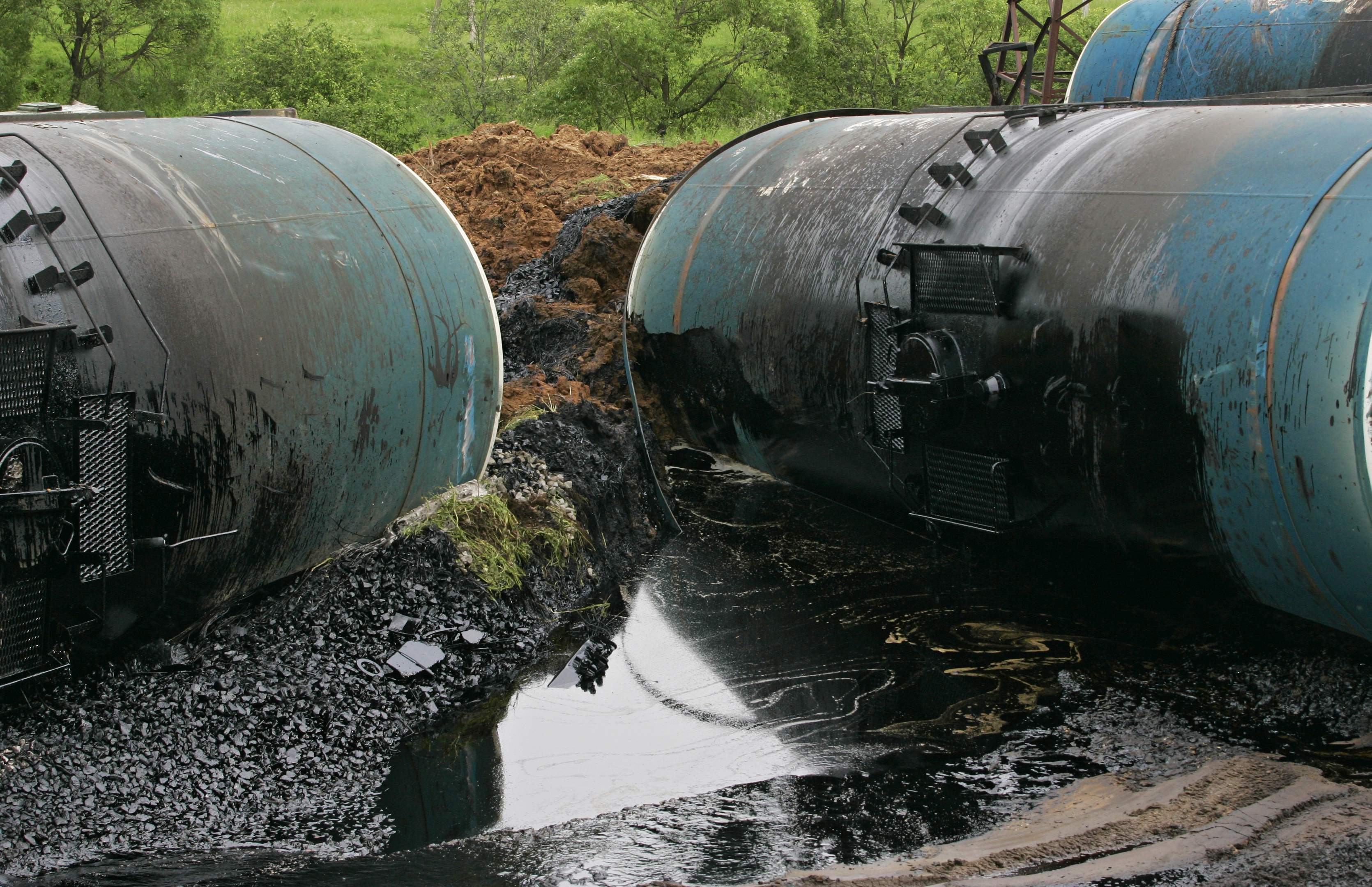 |
The federal regulations you should consider when developing management practices for ASTs include:
- Clean Air Act (CAA) regulations for tank vapor control, air toxics, and pollution reduction
- The Emergency Planning and Community Right-to-Know Act (EPCRA) and Comprehensive Environmental Response, Compensation, and Liability Act (CERCLA) hazardous substance reporting requirements
- The Clean Water Act (CWA)-incorporated OPA that established oil spill prevention, control, and countermeasure (SPCC) plan requirements for petroleum product storage above certain threshold volumes
- Resource Conservation and Recovery Act (RCRA) requirements for ASTs that contain hazardous wastes and used oil
- Department of Transportation (DOT) pipeline regulations that govern ASTs known as pipeline breakout tanks and natural gas storage tanks
- Occupational Safety and Health Act (OSH Act) standards for the design, construction, labeling, and testing of tanks storing flammable and combustible liquids
Attend the SPCC Compliance for Aboveground Storage Tanks webinar on March 25 to ensure your tanks and SPCC plan are in compliance. Learn more.
Four AST Spill Prevention Measures
Although these extra AST spill prevention measures are highly recommended by the Environmental Protection Agency (EPA) for those ASTs that come under the SPCC requirements, all AST facility owners or operators exempt from these regulations should still consider implementing these prevention measures to preclude any storage tank problems.
- Facility location. The location of the facility must be considered in relation to drinking water wells, streams, ponds and ditches (perennial or intermittent), storm or sanitary sewers, wetlands, mudflats, sandflats, farm drain tiles, or other navigable waters. The distance to drinking water wells and surface water, volume of material stored, worse-case weather conditions, drainage patterns, land contours, and soil conditions must also be taken into account.
- Corrosion control. ASTs should have corrosion protection for the tank. Options include elevating tanks, resting tanks on continuous concrete slabs, installing double-walled tanks, cathodically protecting the tanks, internally lining tanks, inspecting tanks according to the American Petroleum Institute Standard, or a combination of these options. All underground piping to the tank should be double-walled or located above ground or cathodically protected so you can inspect it when it fails. To maximize system safety, seal the floors, containment area, and sump pump pit with an appropriate coating (e.g., petroleum-resistant coating). Any accumulated water should be inspected for petroleum or chemicals before discharge.
- Periodic cleanup. Accumulated minor spillage, over time, may result in a film or sheen on collected rain water, making it unsuitable for discharge to the soil or drains. Periodic cleanup of the containment areas (e.g., sweeping with a broom and using limited absorbent) can prevent unnecessary dirt and contaminant buildup.
- Preventing evaporation. While not a preventive measure for source water protection, preventing evaporation has economic and air quality benefits. To keep out rain and reduce evaporation losses and moisture condensation, paint tanks a reflective color, install them in an east-west direction, install a low-pressure valve on top of the tank, and cover the structure. A roof structure covering a 10,000-gallon (gal) tank will conserve 600 to 1,000 gal of gasoline per year, which would have escaped by evaporation without the shade cover.
SPCC Compliance for Aboveground Storage Tanks: Best Practices for Handling, Inspection, Maintenance, and Operation
Join us March 25 to learn best practices for keeping your ASTs compliant and leak-free. Register now!
Check with Your State and Local Authorities
Most ASTs must meet state and local fire codes, which usually have some mix of construction, installation, operation, and maintenance requirements that are intended to prevent fires and other hazards that can come from mismanaged or substandard ASTs. The requirements can usually found in environmental regulations and/or the fire code. There may be requirements to paint the tank, or a fill pipe, a certain color to identify its contents, provide alarms in addition to those federally required, and registration of the tank.
Industry Standards
The storage tank industry has developed hundreds of technical standards for ASTs. The EPA and many states have incorporated these industry standards into their tank statutes and regulations.
